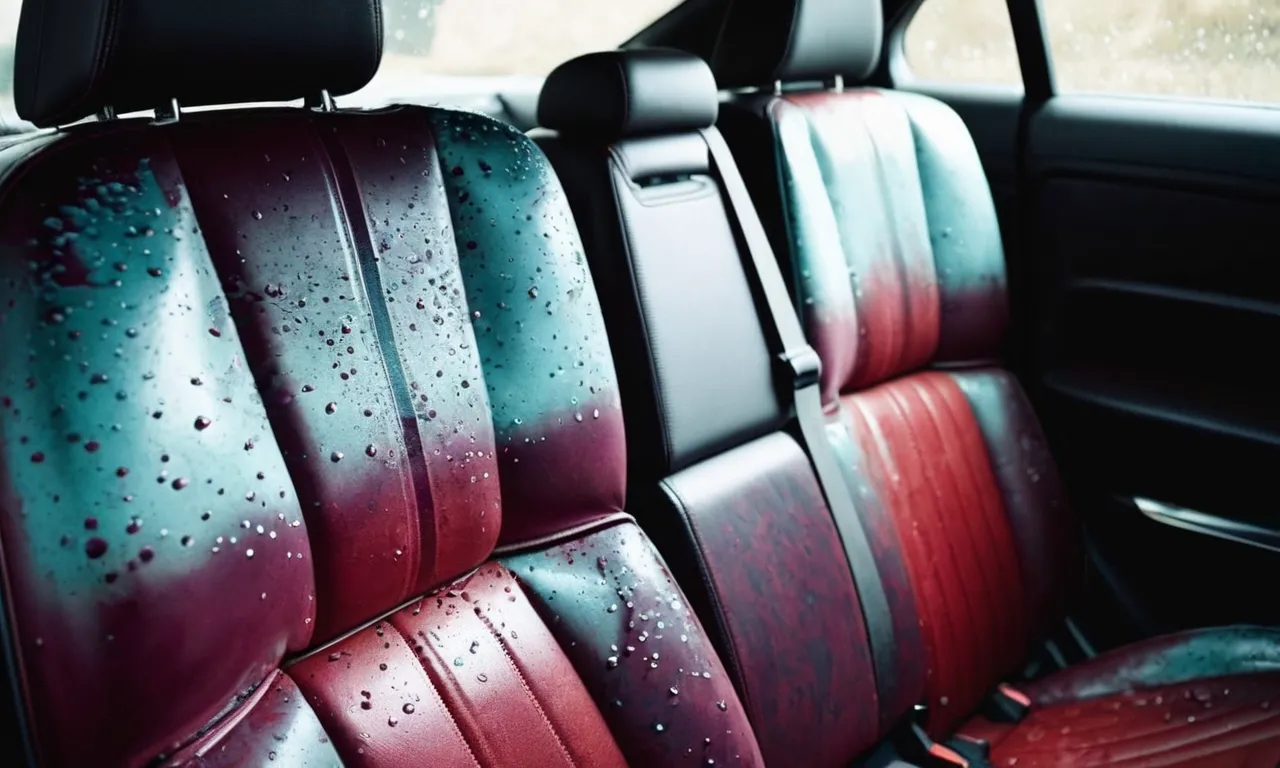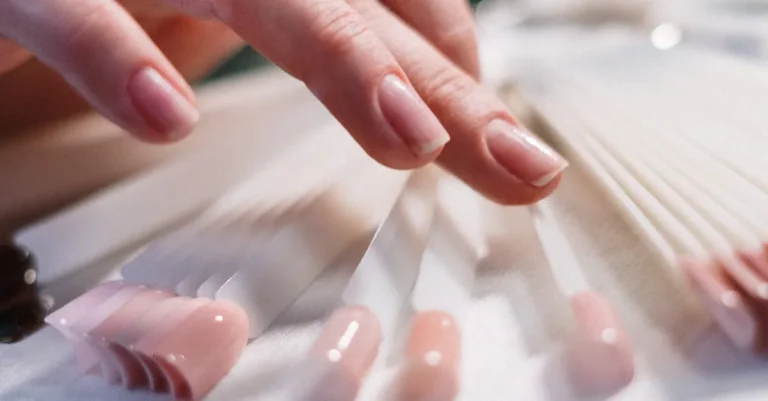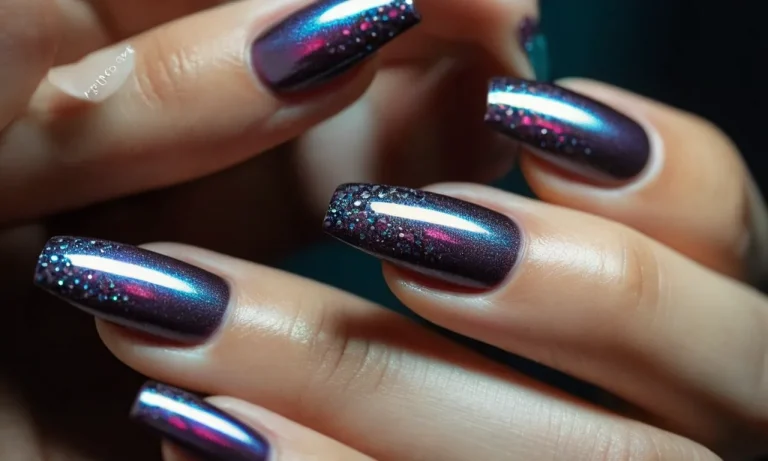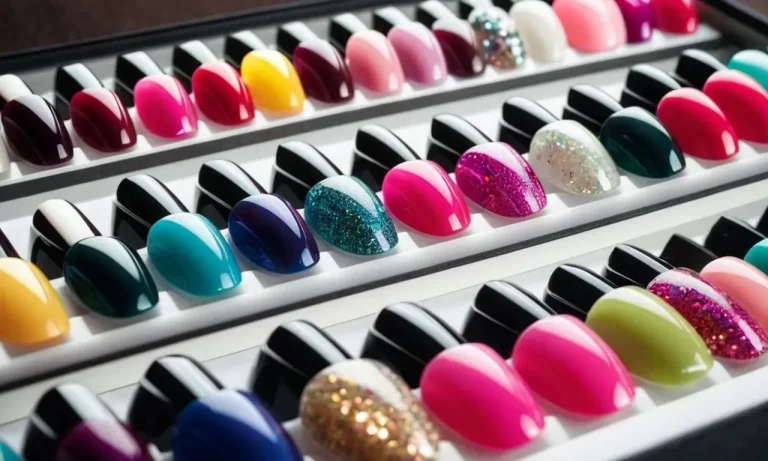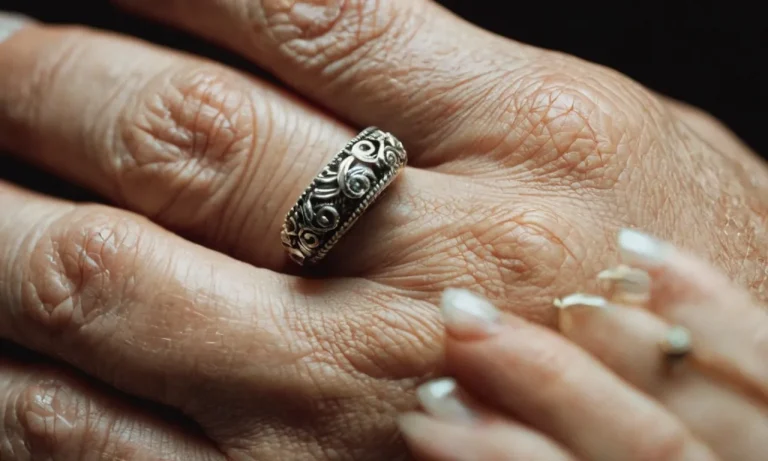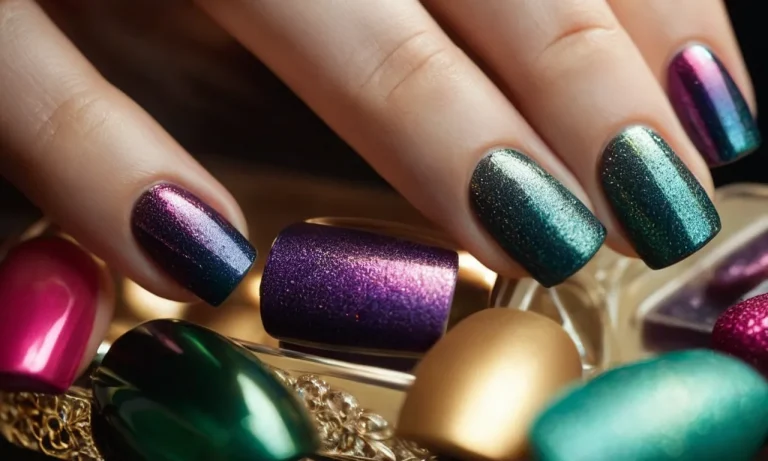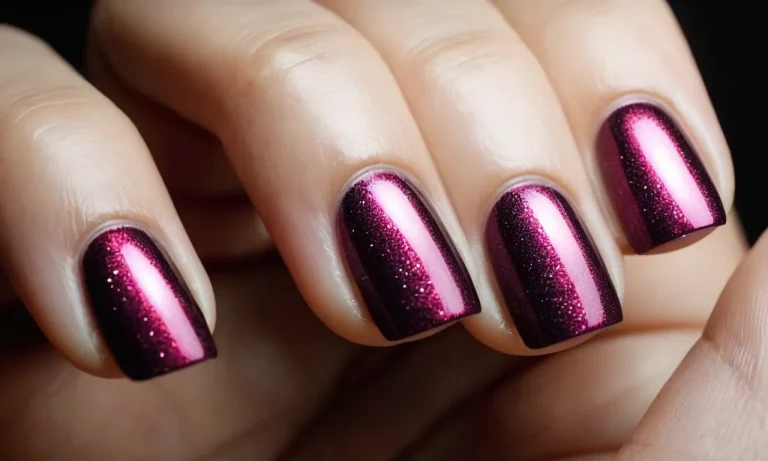How To Get Nail Polish Out Of Car Seats: A Step-By-Step Guide
Nail polish stains on your car seats can be an eyesore and difficult to remove. However, with some handy tips and household items, you can get those pesky stains out in no time.
If you’re short on time, here’s a quick answer to your question: gently dab the stain with nail polish remover and wash the spot with soap and water. For tougher stains, make a paste of baking soda and vinegar and let it sit on the stain before scrubbing.
In this comprehensive guide, we will go over several methods to remove various types of nail polish stains from your car seats, ranging from light stains to those that have set in. We will also provide tips to help prevent future stains.
Assessing the Stain
Check fabric type
When trying to remove nail polish from car seats, the first step is to check what type of fabric you are working with. Leather, vinyl, cloth, and synthetic leather seats will require different techniques. Vinyl and leather can be more delicate, while cloth seats may be easier to scrub aggressively.
Identify if it is a smooth or porous surface so you know how much solvent the fabric can handle without damage.
Determine age of stain
Finding out how long the nail polish has been on the seat is key. A fresh spill will be easier to tackle. The longer the stain has set in, the deeper it soaks into fabric and the harder it will be to lift.
For dried nail polish that has been there over a week, you’ll need a solvent to break down the stains first before removal. Quick action is best!
Identify nail polish color
The color and opacity will give clues on ingredients. Sheer and light colors often have less pigment. Darker or glitter polishes contain more stain-causing ingredients. Red nail polish in particular is known to leave behind a stubborn tint due to the artificial coloring used.
This helps you gauge the intensity of stain treatment needed for maximum effectiveness.
Now that fabric, age, and color factors are assessed, you can determine the best stain removal method. Tackle fresh stains ASAP by blotting gently without rubbing it in further. For older dried stains, try solvents like rubbing alcohol or nail polish remover.
Identifying the type of nail polish is useful to pick the best cleaner. With some tips and targeted solutions, you can get the car looking polished again!
Removing Fresh Stains
Use nail polish remover
Using a bit of nail polish remover on a clean rag or cotton ball can be quite effective at lifting and dissolving a freshly spilled polish mark from a car’s upholstery. Be sure to test an inconspicuous area first to check for discoloration or damage to the fabric.
Gently dab and blot the stain repeatedly with the nail polish remover until the mark fades. It is best to use acetone-free remover which will be gentler on car materials.
Try hairspray or rubbing alcohol
Both hairspray and rubbing alcohol, also known as isopropyl alcohol, can be helpful DIY solutions to tackle wet or sticky nail polish spills. The alcohol solvent in these products breaks down the polish formula, making it easier to wipe away. Simply spray some hairspray directly onto the stain.
It helps to have something porous around, like a cloth or paper towel, to soak it into for some extra scrubbing. Let it sit on the stain for 5 minutes before using the cloth to blot and rub it. White vinegar is another alternative household cleaner with de-greasing properties.
Just be careful not to oversaturate the carpet or upholstery.
Make a vinegar solution
White vinegar can be diluted with warm water 1:1 for a natural option for dissolving fresh polish spills. The acidic nature of the vinegar attacks the bond the polish has on the fabric to lift out the pigments. You can reapply a vinegar and water solution as needed with some clean cotton rags.
Gently pat the area while cleaning to avoid scrubbing the stain in deeper. This is a good method for tackling stains on dark-colored car upholstery since vinegar is safe and non-damaging.
Use baking soda paste
For more stubborn, dried-on polish stains that hairspray or nail polish remover didn’t fully address, try making a cleaning paste with baking soda and water. The abrasive property of the baking soda will work like a gentle scrub to lift pigments from the fibers.
Mix 3 parts baking soda to 1 part water until you achieve a smooth paste consistency. Apply the paste over the stain and allow to dry before brushing off and vacuuming up any residue. This can be used on both carpet and upholstery.
Test in an inconspicuous spot first to ensure the fabric dye doesn’t lift.
As a preventative measure, it’s wise to keep nail polish securely capped and stored in a Ziploc bag while transporting to reduce the chances of messy spills occurring inside the car. But even with careful precautions, drips and leaks can happen from time to time.
Using these effective, non-toxic home remedies will have your car looking tidy again quickly.
Removing Old Stains
Make a bleach paste
Old nail polish stains that have set into your car’s fabric can be tricky to remove. One effective method is making a paste with bleach and water. Mix one part bleach with one part water and stir into a paste. Using an old toothbrush, gently scrub the paste into the stained area.
Let it sit for 5-10 minutes, then blot the area with a damp cloth. The bleach will help break down the nail polish so it can be lifted from the fabric. Just be careful not to leave the bleach paste on too long, as it could damage or discolor the surrounding fabric.
Steam clean the fabric
Another great way to tackle stubborn old stains is by steam cleaning the car’s upholstery. The heat and pressure from the steam will help loosen the polish so it can be extracted. Focus the steam cleaner’s nozzle directly on the stain and slowly move it across the area.
Make sure to check the care instructions for your car’s fabric first, as some materials like leather shouldn’t be steam cleaned. For most standard upholstery though, a thorough steam cleaning session can get out old stains that have set in over time.
Repair with touch-up paint
If you have nail polish stains on leather or vinyl areas like your dashboard or door panels, try using touch-up paint on the spots. First clean and dry the stained section, then dab a small amount of touch-up paint on the area using a cotton swab. Try to match the color as closely as you can.
Let it fully dry, then buff it gently with a microfiber cloth. The paint can cover up the stained spot and make it less noticeable. Just take care to only apply it to small areas and blend it carefully so it looks natural.
For very old, set-in stains, you may need to try a combination of methods like repeated bleaching, steaming, and touch-up paint until the spots become less visible. With some time and effort, you can get rid of those old nail polish stains for good!
Preventing Future Stains
Apply a protectant spray
To avoid more nail polish disasters in your car’s upholstery, apply a stain-resistant protectant spray after you’ve removed the stain. There are several interior protectant sprays made specifically for automotive upholstery that create an invisible barrier against future stains.
Popular brands like 303 Aerospace Protectant and Chemical Guys Fabric Guard get high marks from detailers.
Be sure to thoroughly vacuum and clean your seats first before applying the protectant. Lightly mist the protectant over all upholstered surfaces and use a clean microfiber towel to evenly distribute the product. Allow it to fully dry before sitting on the seats.
Reapply every few months for continued protection.
Use seat covers
Another preventative option is to use custom-fit seat covers in your vehicle. These barriers will keep all of your upholstery safe from spilled nail polish and other stubborn stains. There are many universal and custom styles to choose from in materials like neoprene, polyester, and leatherette.
For optimal protection, look for a water-resistant seat cover that fully encases the entire seat. That way nail polish won’t be able to leak through any cracks or openings. Machine-washable covers are also useful for keeping them fresh and clean.
Store nail polish properly
Careless storage of nail polish bottles in your car can clearly lead to ugly stains. Keep your polish in a separate pouch or bag securely zipped or buckled shut. Consider one with plastic lining or waterproof fabric so leaks won’t seep through.
There are several nail polish organizer bags available from beauty brands like Sephora and The Container Store designed to neatly hold bottles and prevent spills and leaks while traveling. Only transport what you need for the day and don’t overload the capacity.
Opt for quick-dry nail polish
The longer wet nail polish takes to dry, the more likely it can drip or spill in your moving vehicle. So when choosing colors to keep in the car, go for quick dry polishes that set in 60 seconds or less.
Top quick-dry brands beloved by manicurists include Essie, OPI, and Sally Hansen. Or look for handy mini bottles which tend to dry faster with less polish. Just remember to securely cap bottles immediately after applying color to fingers or toes!
Conclusion
While nail polish stains can be frustrating, rest assured that with a few household items and some elbow grease, you can get your car seats looking clean again. Act quickly when you spot a fresh stain, and be patient when tackling set-in stains.
With the methods outlined here, you’ll be back to pristine seats in no time!

